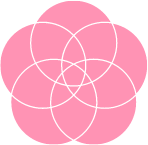When I signed up for a weekend course in Reiki Level 1 twelve years ago, I wasn’t sure what to expect. I had heard of Reiki and my friend had recently become a Reiki Master, so it was a familiar term. Having studied various complimentary healing modalities over the years, I was excited to find out what was unique about this particular method and to see if it was something I might offer to clients in my healing practice. While I came out of the weekend with answers to both of these questions (Reiki is indeed unique and I did want to start offering treatments to others), I was surprised by some of the other bonuses I took with me.
The power of participating in the class. I had not anticipated how relaxing and rejuvenating the class itself would be. Pregnant with my second child at the time, I was grateful to be in the company of a teacher who was nurturing and peaceful and peers who valued taking care of themselves and others. The exchanges that we completed in the class left me feeling centered and more calm, every time. I ended the weekend feeling refreshed and energized, as well as empowered by a new-to-me practice that I could start tapping into in my everyday life.
The power of self-practice. Of all the forms of healing work I have studied, Reiki places the most emphasis on regularly offering treatments to oneself before treating others. Self-care is truly embedded in the core of the work. At the very beginning of Level 1, students learn how to offer Reiki to themselves. The self-practice proved invaluable to me over the next few months, bolstering my reserves while dealing with the stresses of pregnancy, my father’s late-stage cancer diagnosis, and eventually a lack of sleep from life with a newborn. These days, whether my life is waxing calm or chaotic, placing my hands in the first position immediately settles something inside me.
The power of having a simple and quiet practice to offer others during difficult times. Reiki sessions involve either light, still touch or holding hands just above the body, depending on the preference of the recipient. Because of its gentle and subtle nature, Reiki is well suited for supporting those who are dealing with difficult experiences, illnesses, and those in hospice. During a visit to my father in home hospice, I offered him a short Reiki treatment. As he sat in his chair, I gently placed my hands on top of his head. We didn’t talk, but the quiet was powerful. It was the most meaningful visit I had with him in the weeks before he passed. Over the years there have been other loved ones to whom I have given treatments – one in a wheelchair with dementia, another who was home after a physically and emotionally wrenching week in the hospital, my children after particularly hard days at school, a beloved cat as she was getting ready to pass, and a rescue pup who was still adjusting to his new home. Reiki offered me a way to show up with my loved ones, with compassion and without expectation, to be truly present and whole-heartedly available.
Reiki stands out among healing arts practices because of how simple and easy it is to learn. Level 1 training typically takes around ten hours and is cost-efficient. The self-practice is a powerful way to offer care to yourself and can be done almost anywhere. Giving treatments to others doesn’t require any tools and just a few minutes can be powerful. Learning this practice can benefit you and your loved ones, perhaps even in unexpected ways.
Interested in learning Reiki Level 1? I have a training coming up this fall with both online and hybrid options — https://triciareed.com/featured-content/reiki/

